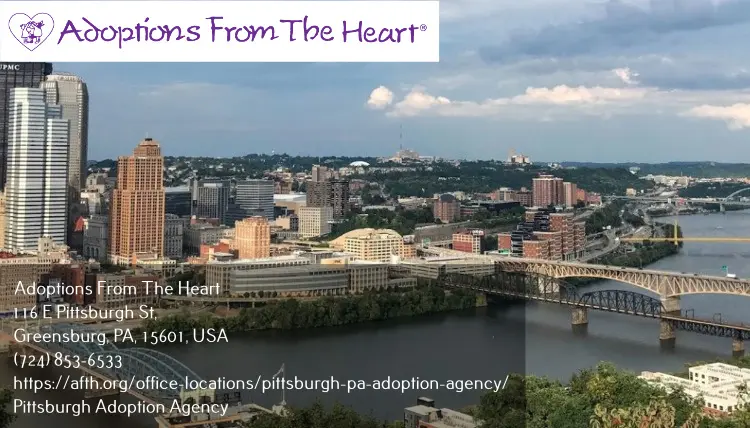
The information in this article is kindly sponsored by the adoption agency in Pittsburgh, Pennsylvania, from Adoptions From The Heart, which conveniently has an agency located in Pittsburgh. We hope you enjoy the information in this article.
Background
Pittsburgh is the county seat of Allegheny County in the state of Pennsylvania in the US. As of 2019, the city has an approximate population of 300,286 people, making it the 66th-largest city in the United States and the second-most heavily populated city in Pennsylvania, after Philadelphia.
History
General John Forbes, a Scottish soldier who served in the British Army, named Pittsburgh in 1758 in honor of British statesman William Pitt, 1st Earl of Chatham. On April 22, 1794, Pittsburgh became an incorporated borough, upon the following deed, “Be it enacted by the Pennsylvania State Senate and Pennsylvania House of Representatives of the Commonwealth of Pennsylvania … by the authority of the same, that the said town of Pittsburgh shall be … erected into a borough, which shall be called the borough of Pittsburgh forever.”
Up until August of 1921, Pittsburgh was recognized as “Pittsburg” and later added the h in its nameplate.
19th Century
The Lewis and Clark Expedition, also known as the Corps of Discovery Expedition, began in Pittsburgh from August 31, 1803, until September 25, 1806, where the expedition was to cross the western portion of the country and report its findings to President Thomas Jefferson.
The War of 1812 took quite a toll o the supply of British goods, which strengthened the American manufacturing industry. By 1815, Pittsburgh had established itself as a major producer of iron, brass, tin, glass and also operated a number of river steamboats that increased river trade traffic. Shortly after, in 1816, the half a century-year-old government became a city.
20th Century
Carnegie Steel Company and several other firms were consolidated into U.S. Steel by J. P. Morgan and attorney Elbert H. Gary in 1901. By 1910, Pittsburgh was the eighth-largest city in the United States, producing between one-third and half of the nation’s steel.
As the years went by, the population continued to grow, with over a half-million people drawn to Pittsburgh for industrial jobs, especially European immigrants. With the growing population came a change in diversity, with about 90% of the cities population being non-Hispanic whites.
Pittsburgh was economically powerful through the late-2000s crisis, creating jobs when other cities were cutting them.
It was one of the few cities in the US where housing property prices increased.
Continue reading related articles such as: Uncovering The History of Jeannette, PA.
Our Local Office
Our caring professionals are ready to support potential adoptive parents, pregnant mothers, and their children from our Pittsburgh, Pennsylvania, adoption agency at AFTH. Our team can answer any questions you may have and can provide you with the knowledge that you and your family need to make the right decision.




